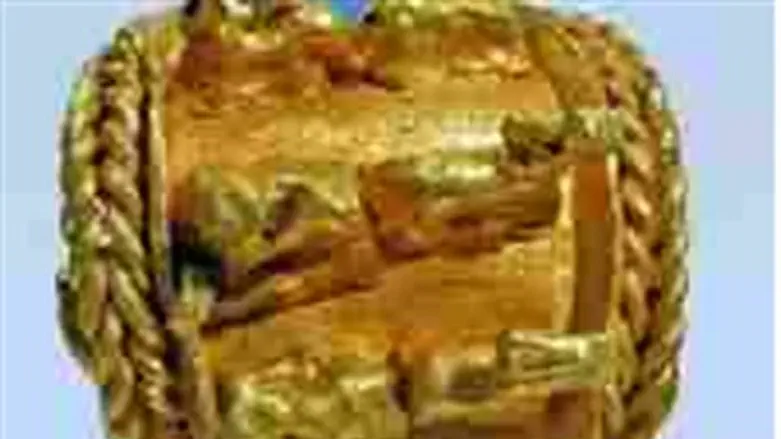
Archaeologists have discovered a collection of ancient jewelry hidden in a vessel at Tel Megiddo in the Jezreel Valley in northern Israel.
Dated from about 1100 BCE, one of the pieces is a gold earring decorated with molded ibexes – wild goats – and considered “without parallel.”
According to Tel Aviv University's Professor Israel Finkelstein, the vessel was discovered in 2010 but remained uncleaned while awaiting a molecular analysis of its contents. When the team was finally able to wash out the dirt, pieces of jewelry, including a ring, earrings and beads tumbled from the vessel, Finkelstein said.
A member of TAU's Department of Archaeology and Near Eastern Cultures, Finkelstein is co-director of the excavation of Tel Megiddo along with TAU Professor Emeritus David Ussishkin and Associate Director Professor Eric Cline of George Washington University in Washington, D.C.
The jewelry had been wrapped in textiles, said Ussishkin, who added that he believes it belonged to the Canaanite woman who lived in the house where the collection was found – a private home in the northern part of Megiddo.
It belongs to a time period called “Iron I,” the researchers said, adding that at least some of the jewelry could have originated in Egypt. The collection also includes a number of moon-shaped earrings of common Canaanite origin, the researchers said, as well as many gold items and a number of carnelian beads, common in Egyptian jewelry of the period.
Tel Megiddo was an important Canaanite city-state until the early 10th century BCE, and a pivotal center of the Northern Kingdom of Israel in the 9th and 8th centuries BCE. The layer in which the jewelry was found has been dated to the 11th century BCE, just after the end of Egyptian rule in the 12th century BCE.
An analysis of the jewelry itself and the textiles in which it was wrapped will tell the researchers more about the story of its owner, they said. For example, if the gold is pure – rather than a mixture of gold and silver – the metal was likely to have come from Egypt, where silver was rare but gold was plentiful.